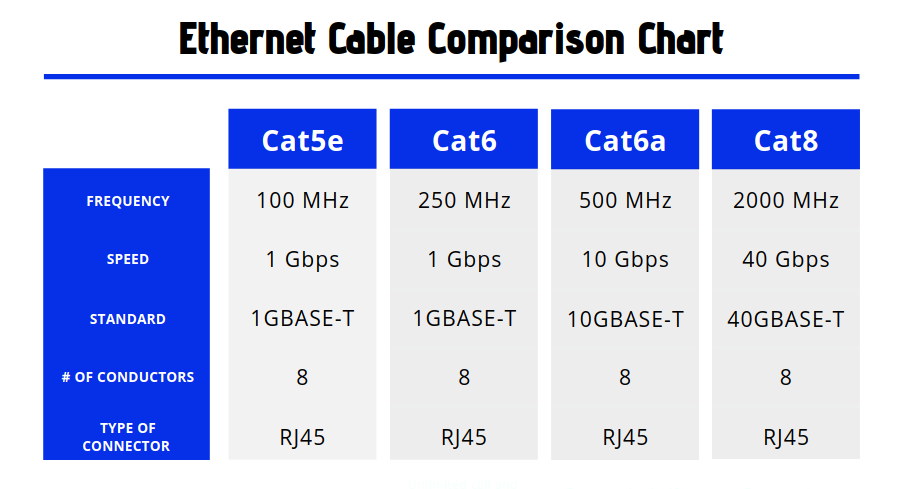Here at CableWholesale, our aim is to provide you with the newest industry advancements and standards so that you can stay up to date with the latest technology. Today we will focus on the new and improved Ethernet network cabling standard, Category 8. Category 8 is similar to previous standards Cat5e, Cat6, and Cat6a in that they use the same RJ45 connector and are fully backward compatible. The internal features of Cat8 and performance attributes are what set this new cable apart from the others.
Category 8 supports bandwidth up to 2000 MHz and internet speeds up to 40 Gbps at distances up to 30 meters. If you need a longer run, it can still achieve data speeds of 10Gbps up to 100 meters. Another unique characteristic within Category 8 cables is that there is no unshielded version of these cables. They are all shielded. The shielding within the cable helps create a high-frequency rating, which in return provides better performance speed.
We know everyone wants to wire their home with the fastest and best ethernet cable available. This newest Category 8 fits that bill, but its true intended use is in server racks and data centers. They will still work, but are not really intended for the home or office use. As technology advances, the demand for increased data speeds will continue to grow and manufacturers will continue to develop solutions that can support those higher speeds.
Some of you may be wondering how we went from Cat6a to Cat8 and completely skipped over Cat7. As far as TIA (Telecommunications Industry Association) standards go, approved ethernet specifications are Cat5e, Cat6, Cat6a, and Cat8. You may find cables on the market that have names like Cat6e, Cat6x, Cat7, and others. Please note that these are not approved standards for Ethernet cable by the TIA. If you see cabling for sale labeled as Category 7, it is likely based on The European ISO standard of Class F. This standard is not recognized by the TIA/EIA, nor do any manufacturers support it on their Ethernet equipment. If you buy ethernet cable that is not an approved standard of EIA/TIA, it cannot be guaranteed exactly what you are buying.
Check out our Ethernet cable comparison chart below to see how Cat8 stacks up against its predecessors:




